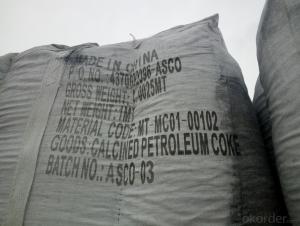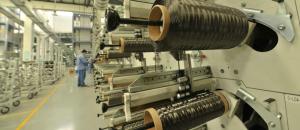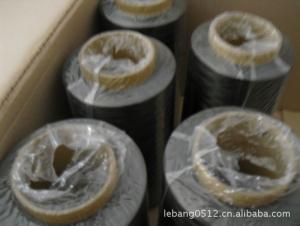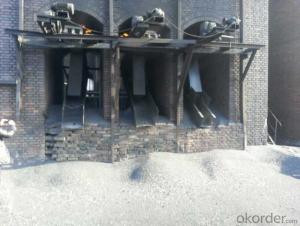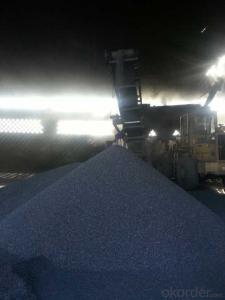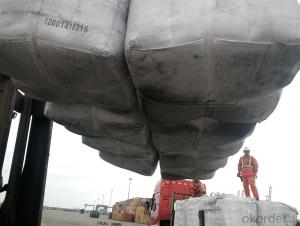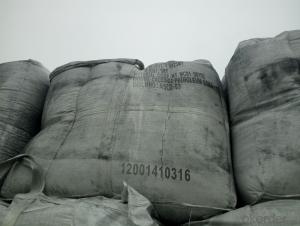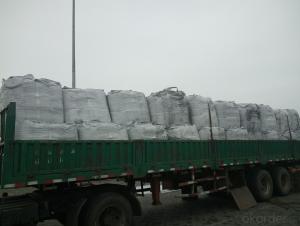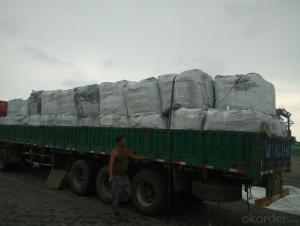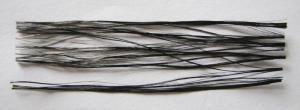Calcined Pitch Coke with Ash 0.5 percent max used as Carbon Raiser
- Loading Port:
- Tianjin
- Payment Terms:
- TT OR LC
- Min Order Qty:
- 21 m.t.
- Supply Capability:
- 8000 m.t./month
OKorder Service Pledge
OKorder Financial Service
You Might Also Like
Introduction
Pitch Coke/Coal Tar Pitch is a kind of black brittleness and blocky piece, lustrously at normal temperature. It has special odour and poisonous and can be easily flame when melting, second-grade inflammable solid.
Pitch Coke/Coal Tar Pitch is obtained from powerfully processed coal tar. Compared to petroleum asphalt, the adhesiveness is better. Coal Tar Pitch is high quality tar production with high fixed carbon. It has excellent adhesion, waterproofing and resistance against seawater, oil and various chemicals. In these properties, it is much better than petroleum asphalt tar.
It can be used to produce painting, electrode, pitch coke, and tar felt. It also can be used as fuel and the raw material of asphalt carbon black.
Features:
The morphology, chemistry and crystallinity of recarburisers have a major impact on the overall casting cost. The combined application and cost benefits, which are derived through the use of Desulco, enable foundries to manufacture castings in a highly cost effective manner.
reduces
Recarburiser consumption
Power consumption
Inoculant consumption
MgFeSi consumption
Furnace refractory wear
Scrap rate
Tap to tap time
Slag inclusions risk
Chill
increases
Casting microstructure
Productivity
Process consistency
Carbon Recovery
Compared with calcined petroleum coke, acetylene coke and
graphite electrode scrap, Desulco yields the highest carbon
recovery and fastest dissolution time
Specifications:
CPC | |||
F.C.% | 98.5MIN | 98.5MIN | 98MIN |
ASH % | 0.8MAX | 0.8MAX | 1MAX |
V.M.% | 0.7 MAX | 0.7 MAX | 1 MAX |
SULFUR % | 0. 5MAX | 0. 7MAX | 1MAX |
MOISTURE % | 0.5MAX | 0.5MAX | 1MAX |
Pictures:
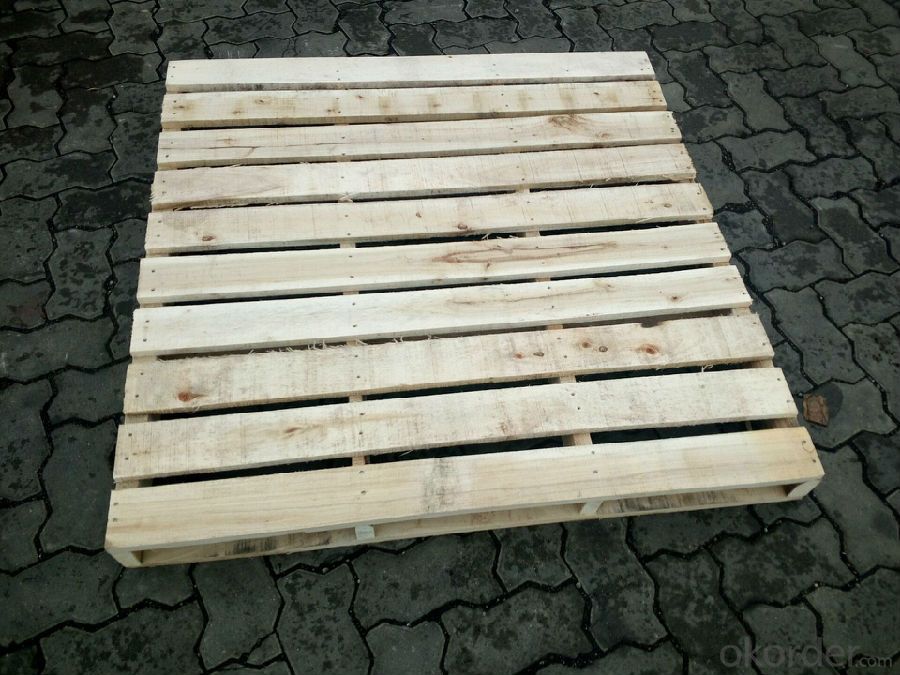
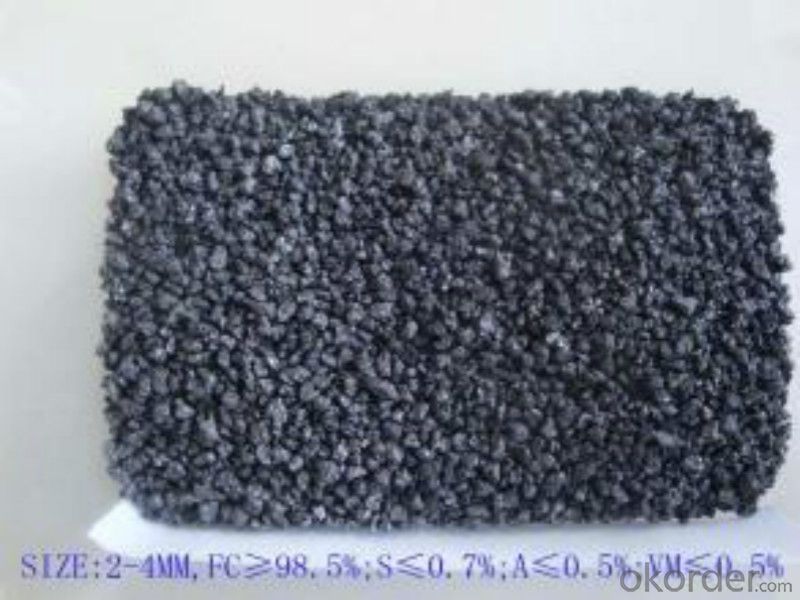

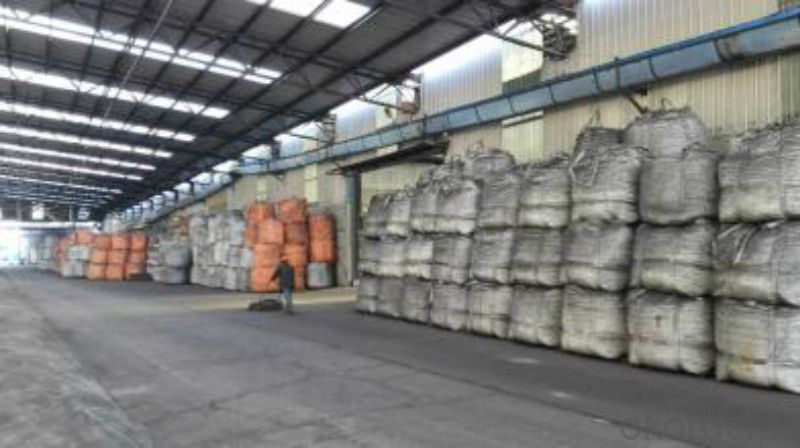
FAQ:
1.MOQ:2 Containers |
2.Size:1-3mm,1-5mm,2-6mm,3-5mm and as the customer's requirement |
3.Packing: 1 ton jumbo bag or 25kgs paper in bag |
4.Payment:T/T or L/C at sight |
5.Delivery time: within 15 days after receiving the deposit |
6.Usage: it is as carbon raiser,widely used in steelmaking,casting,casting iron,steel foundry,aluminum metallury. |
- Q: How does carbon dioxide affect global warming?
- Carbon dioxide (CO2) is a greenhouse gas that plays a significant role in global warming. When released into the atmosphere, CO2 traps heat from the sun, preventing it from escaping back into space. This process leads to the Earth's temperature increasing, resulting in global warming. The increased levels of CO2, primarily from human activities such as burning fossil fuels, deforestation, and industrial processes, have caused a substantial rise in the Earth's average temperature over the past century. This rise in temperature has led to various adverse effects, including melting ice caps, sea-level rise, extreme weather events, and disruptions to ecosystems. Thus, carbon dioxide is a major contributor to global warming and its associated impacts.
- Q: How does carbon impact the ozone layer?
- The ozone layer is not directly affected by carbon, but carbon-containing compounds such as CFCs can greatly impact it. When CFCs are released into the atmosphere, they can reach the stratosphere and break down due to UV radiation, releasing chlorine atoms. These chlorine atoms then destroy ozone molecules catalytically, causing the depletion of the ozone layer. The depletion of the ozone layer is a crucial environmental concern because it allows more harmful UV radiation from the sun to reach the Earth's surface. Increased UV radiation can have negative effects on human health, including skin cancer, cataracts, and weakened immune systems. It can also harm ecosystems by damaging phytoplankton, which are vital to the marine food chain, and affecting the growth of plants and crops. To address this issue, the international community has taken measures to decrease the production and usage of substances that deplete the ozone layer, including CFCs. The Montreal Protocol, an international environmental agreement, has successfully phased out the production of CFCs and other harmful substances. This has contributed to the recovery of the ozone layer, although it remains a long-term process. In conclusion, carbon itself does not directly impact the ozone layer. However, carbon-containing compounds like CFCs, when released into the atmosphere, can cause the destruction of the ozone layer. Efforts to reduce the production and usage of these substances that deplete the ozone layer have been essential in safeguarding the ozone layer and mitigating the harmful effects of increased UV radiation.
- Q: What is methane?
- Methane is a colorless and odorless gas that is the primary component of natural gas. It is the simplest hydrocarbon, consisting of one carbon atom and four hydrogen atoms, and has the chemical formula CH4. Methane is highly flammable and burns in the presence of oxygen, releasing carbon dioxide and water vapor. It is produced naturally through the decomposition of organic matter by bacteria in environments with little or no oxygen, such as swamps, marshes, and landfills. Methane is also produced by livestock, such as cows, as a byproduct of their digestive process. It is considered a greenhouse gas and a major contributor to climate change due to its ability to trap heat in the Earth's atmosphere. Methane is widely used as a fuel for heating and cooking, as well as in industrial processes and electricity generation.
- Q: The home wants to install electricity to warm the floor, the metal heating cable certainly won't use to have radiation, but is carbon system carbon fiber good or carbon crystal good?
- The metal heating cable radiation is very small, much smaller than your mobile phone, carbon fiber, carbon life of only ten years, did not reach the standard of heating heating industry, the industry standard is 50 years of life, only water heating and heating cable alloy wire current.
- Q: What is carbon nanoelectronics?
- Carbon nanoelectronics refers to the field of study and technology that focuses on using carbon-based materials, particularly carbon nanotubes or graphene, to create electronic devices and components at the nanoscale. These materials possess unique electrical and mechanical properties, making them highly promising for developing faster, smaller, and more efficient electronic devices such as transistors, sensors, and memory storage units.
- Q: How many electrons does carbon have?
- Carbon has six electrons.
- Q: Just come out to work, do activated carbon, often see carbon materials and carbon materials, I do not know what the difference, trouble you!
- Carbon refers to elements. Carbon materials usually refer to materials that contain carbon and are the main bodyCarbon is a carbon containing substance of no composition and property consisting of carbon elements
- Q: How does carbon affect the pH of water?
- Carbon can affect the pH of water through the process of carbonation. When carbon dioxide (CO2) dissolves in water, it reacts with the water molecules to form carbonic acid (H2CO3). This reaction increases the concentration of hydrogen ions (H+) in the water, resulting in a decrease in pH. Therefore, carbonation lowers the pH of water, making it more acidic. Additionally, carbonic acid can further dissociate into bicarbonate ions (HCO3-) and hydrogen ions (H+), which also contribute to the increase in acidity. It is important to note that the impact of carbonation on pH depends on the concentration of carbon dioxide present in the water.
- Q: How is carbon used in the production of activated carbon filters?
- Carbon is used in the production of activated carbon filters because of its highly porous structure. This porous structure provides a large surface area for adsorption, allowing the carbon to effectively trap and remove contaminants such as chemicals, odors, and impurities from air or water.
- Q: What are the effects of carbon emissions on the stability of river systems?
- River systems are significantly impacted by carbon emissions, which have far-reaching consequences. The release of carbon dioxide and other greenhouse gases into the atmosphere contributes to global warming, which in turn disrupts the hydrological cycle and alters river systems. One notable effect of carbon emissions on river systems is the rise in water temperature. As the planet heats up, rivers and other water bodies also become warmer. This increase in temperature has negative implications for aquatic ecosystems, as it reduces oxygen levels and makes many species more susceptible to diseases. Consequently, certain fish and other aquatic organisms may face decline or even extinction, disturbing the delicate equilibrium of river ecosystems. Moreover, carbon emissions play a role in the melting of glaciers and polar ice caps, resulting in higher volumes of water in rivers. The consequences of this can be observed in more frequent and severe flooding events within river systems. The excess water erodes riverbanks, leading to the loss of valuable land and infrastructure. It also forces communities residing along riverbanks to relocate, exacerbating social and economic issues. Additionally, carbon emissions contribute to the acidification of water bodies, including rivers. The increased levels of carbon dioxide in the atmosphere translate to higher concentrations of dissolved CO2 in rivers. When combined with water, this forms carbonic acid. The acidity of the water harms aquatic life, particularly organisms with shells or skeletons made of calcium carbonate, such as mollusks and certain types of plankton. Consequently, the disruption of the food chain has cascading effects on the entire river ecosystem. In conclusion, the impact of carbon emissions on the stability of river systems is profound. The rise in water temperatures, occurrences of flooding, and acidification present significant threats to the biodiversity and ecological balance of rivers. It is vital to reduce carbon emissions and adopt sustainable practices in order to safeguard the stability and well-being of these crucial ecosystems.
Send your message to us
Calcined Pitch Coke with Ash 0.5 percent max used as Carbon Raiser
- Loading Port:
- Tianjin
- Payment Terms:
- TT OR LC
- Min Order Qty:
- 21 m.t.
- Supply Capability:
- 8000 m.t./month
OKorder Service Pledge
OKorder Financial Service
Similar products
Hot products
Hot Searches
Related keywords
